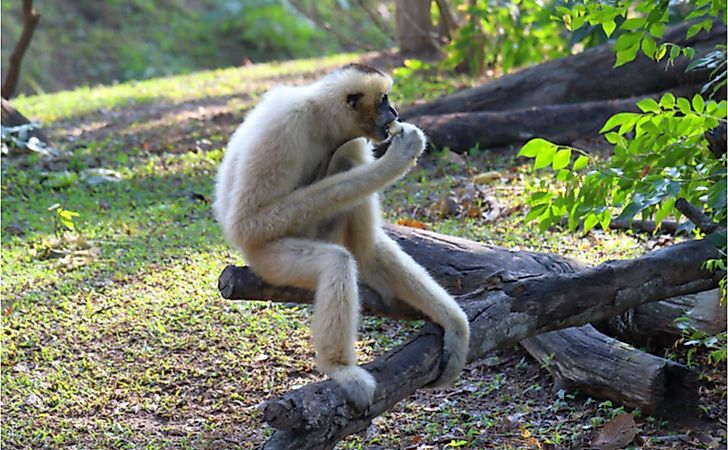8 Important Facts About The Critically Endangered Black Crested Gibbons

A critically endangered species, the days of the black crested gibbon or Nomascus concolor, are numbered. It lives in some of the world's most vulnerable habitats in South and Southeast Asia where it is highly susceptible to numerous threats including habitat loss and poaching. Learn more about this disappearing species in this article.
Males And Females Are Colored Differently
The species exhibits sexual dichromatism or variance of color by sex. Males of the species are almost completely black. Sometimes they have buff or white cheeks. The female, on the other hand, is buff or golden colored with some black patches on the fur, and a black streak on the head.
It Has Four Recognized Subspecies
Four subspecies of the black crested gibbon have been recognized. These are the N. c. jingdongensis and the N. c. furvogaster found in China's Yunnan province, and N. c. lu and N. c. concolor living in Laos and Vietnam respectively.
Breeding Pairs Sing Duets That Echo Through The Forest
The haunting echo of the black-crested gibbons singing duets with their breeding partners can be heard in forests inhabited by them. It helps them to develop and enforce bonding. It also serves to let others know of their presence in their territory.
The Species Is Rarer Than A Tiger
According to IUCN, the global population of the black crested gibbon numbers only around 1,300 to 2,000 individuals. The population is decreasing in all parts of its range and many local populations have gone extinct.
Disappearing Forests Are Its Home
The black-crested gibbon lives in subtropical, deciduous, montane evergreen and semi-evergreen forests. It needs these forests for its survival. However, across its range, habitat loss and degradation have pushed the species to increasingly smaller territories that have made them vulnerable to exploitation by humans.
They Eat Fewer Fruits Than Other Gibbons
While most gibbons are frugivorous, the black-crested gibbon consumes fewer fruits and flowers than other gibbon species except siamangs. Studies on this species in central Yunnan have revealed that the N. concolor jingdongensis feeds on more fruit in the wet season and more leaves in the dry season.
Desire For Pets Is Killing Them
Many black-crested gibbons are illegally captured only to be sold to meet the demands for exotic pets in their range countries and abroad. It depletes their population in the wild and also kills many individuals while in transit.
Traditional Medicine Is Also Fatal For Them
The monstrous hunger for traditional medicines prepared from animal body parts in China and Vietnam has not only claimed the lives of tigers, pangolins, elephants, and other creatures, but the black-crested gibbons are also not spared. Many are poached for the purpose.











